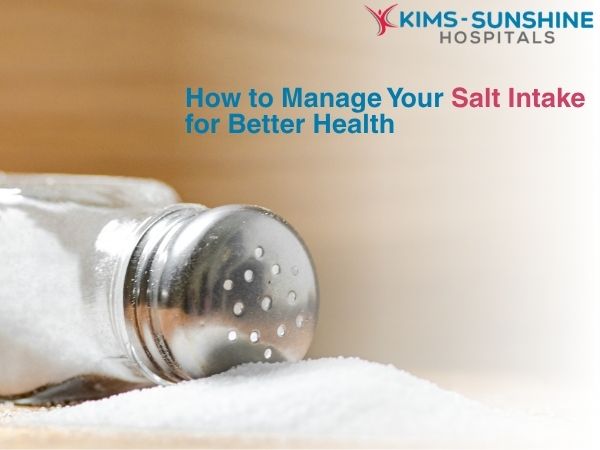
How to Manage Your Salt Intake for Better Health

Salt is an important component in your diet – for health reasons and because it makes food so much more palatable and even tasty! Table salt is a chemical compound called sodium chloride (NaCl) and it is normally used as a condiment to season food. We normally think that eating too much salt alone can cause high blood pressure, but salt is not the issue- the sodium is. One thing to remember about sodium- it is present in a lot of items we eat on a daily basis and this is why sodium levels build up during the day, as you eat more food. Also, different foods contain different amounts of sodium. So, making the right choices needs to be a priority.
The Link Between Salt Intake And High Blood Pressure
The reason behind asking you not to consume too much salt is very simple- when there is more sodium, it causes an electrolyte imbalance. Then, your body will react to it by making you drink lots of water, leading to increased fluid retention. This can change blood pressure values and cause it to increase. Also, consuming low levels of salt chronically can cause hypertension too, because your body needs sodium and it will get it in another way- by influencing the kidney and forcing it to retain more sodium- which is again not good for you. Sodium also influences Growth Hormone (GH) production in the body, but how this happens is not well studied.
How To Read Food Labels For Sodium Content
A DASH (Dietary Approaches to Stop Hypertension) diet plan is one where you make conscious choices to reduce sodium intake by looking for foods low in this mineral. 2300 mg of sodium is the highest value for permissible intake, per day. Higher amounts are harmful for you. Indians especially are well known for eating too much salt, as we think that is what gives food all its flavour. The WHO recommends that we eat only 5 grams of salt per day, but we Indians consume a whopping 10 grams on an average- which is a lot!
Look for labels which say low sodium, sodium free or very low sodium when it comes to choosing snacks and table salt. Some values worth remembering include less than 0.005 grams of sodium in 100 grams of solid or 100 ml of liquid for sodium free foods, 0.04 grams of sodium in 100 grams of solid or 100 ml of liquid and 0.12 grams of sodium for low-sodium foods respectively.
Easy Ways To Reduce Salt Intake Without Sacrificing Flavour
There are some easy ways to slowly reduce your sodium intake and make sure that it is a sustainable change in your routine which stays for a long time.
- Eat fruits and vegetables just like that- no added sugar or salt. That way, you will begin to appreciate its natural taste better.
- Don’t add salt to chapati dough or plain rice. Add slightly lesser amounts of salt than usual for sabzis and side dishes.
- Limit your consumption of spicy and salty pickles, dried fish.
- Eat curd rice without salt in it. Have raita with no salt.
- Avoid commercially available sauces and dressings as they are high in salt. Same goes for eating out- ask if they can add less salt to your oder while eating out.
- Eating potassium rich fruits and vegetables will help your body maintain its electrolyte balance and counteract the negative effects of excessive sodium.
- Drinking plenty of water can help your body regulate sodium levels better.
- Don’t snack on namkeens, mixtures, salty pakoras, noodles, instant mixes etc.
Conclusion
We Indians love our salty foods and tend to over-season everything, because we assume that food without salt is going to be tasteless. Nothing could be farther from the truth. Adding too much salt can make it salty and food can taste bad. Eating food which has lower amounts of salt is better too, as it can allow you to understand and appreciate different taste and ingredient profiles better. Good substitutes for salt include acidic ingredients like garlic, ginger, lemon juice, orange juice, vinegar etc. Not eating pickles, barbecued stuff and mixtures or namkeens can greatly help fix your salty habit.






